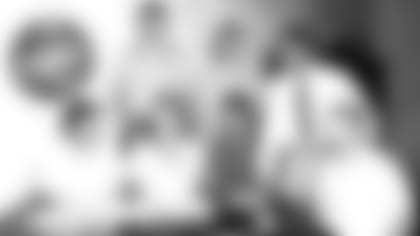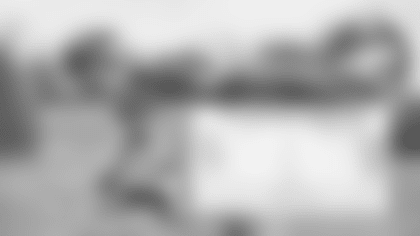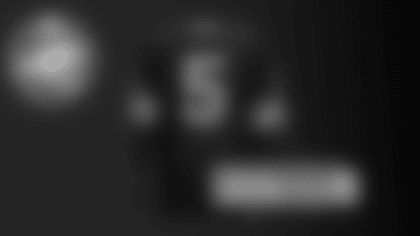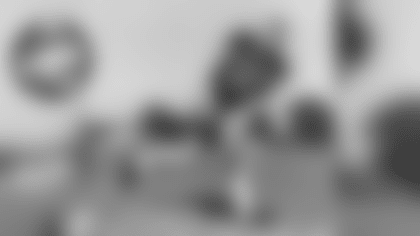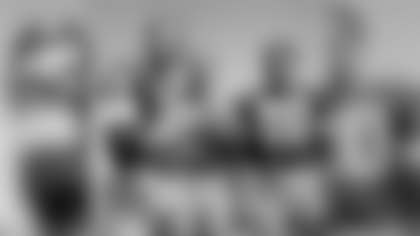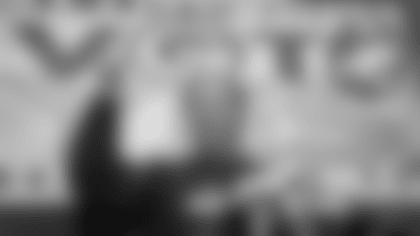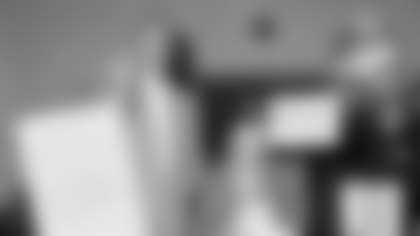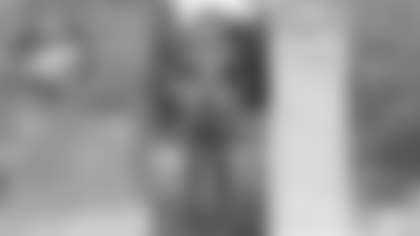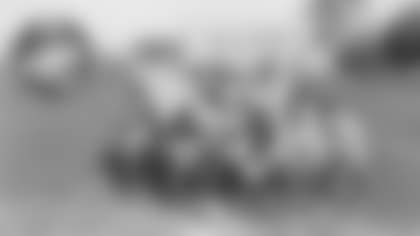Bruce from Las Vegas, NV
I have a question regarding Don Horn. Dan Devine traded him prior to the 1971 season. Like many Packer fans, I thought he had great promise. The Packers were able to get John Brockington as a result, but I have to wonder if Devine regretted the trade considering what he gave up to get some bad quarterbacks. He used a first-round pick on Jerry Tagge, two second-round picks on Jim Del Gaizo, and of course the disastrous John Hadl trade. How do you perceive things would have worked out had Horn remained a Packer and the draft picks used more prudently?
Interesting question, but I think a more intriguing one would be: How good would Horn have been if he had played his entire career for Vince Lombardi? He said after Horn's rookie year that he thought he could be as good as, if not better, than Bart Starr. My immediate reaction was to scoff at that suggestion. Horn was a bust; Starr was a Hall of Fame quarterback, league MVP in 1966 and MVP of the first two Super Bowls. Then again, Starr also was drafted in the 17*th* round, 200th overall, and had started 19 games without finishing or really producing a victory prior to Lombardi becoming coach. Horn was the third quarterback and 25th-overall choice drafted in 1967. So, who am I to question Lombardi about one of his players? Wouldn't that be the height of ignorance? Lombardi won five NFL championships in a seven-year span. No other coach in the history of the NFL has won that many in a decade.
Horn played more than token minutes in only one game for Lombardi: the 1967 season finale against Pittsburgh. It was a meaningless game because the Packers had clinched their division, so Starr played only in the first quarter and one series of the second, while Zeke Bratkowski played the third quarter. Horn played the rest of the second quarter after Starr's departure and all the fourth quarter. He also finished with the best stats of the three – 11 of 19 for 154 yards – and led all three scoring drives in a 24-17 loss. The next year, when Lombardi was general manager and Phil Bengtson the coach, Horn spent most of the season in the Army, but was activated for the final game and led the Packers to a 28-27 victory over the Bears in relief of Bratkowski. Horn entered the game late in the first quarter, completed 10 of 16 passes for 167 yards, including two touchdowns and a 45-yard completion that set up a third. The next day, the Associated Press named Horn the NFL's offensive player of the week.
A year later, after Lombardi left for Washington, the Packers were 5-5 when Horn took over as the starting QB for an injured Starr and won three of four starts as the Packers finished 8-6. Again, Horn was named AP's player of the week after the final game of the season. This time, he completed 22 of 31 passes for a Packers single-game record 410 yards. He also tied Cecil Isbell's 27-year-old record for most touchdown passes in a game with five as the Packers outscored the St. Louis Cardinals, 45-28.
Opposing coaches were singing his praises. Cleveland's Blanton Collier said losing Starr to injury was a blow but added that he thought Horn was ready to take over the job. Charley Winner, coach of the Cardinals, said of Horn: "He ought to lead them to a championship next year."
When the next season arrived, Horn sat the bench behind Starr and was awful in limited relief roles. He was 28 of 76 passing and threw 10 interceptions compared to two touchdowns. After Bengtson was fired, Devine took over and traded Horn to Denver to move up three spots in the 1971 draft to land Brockington and Aldon Roche. As things turned out, the Packers clearly got the best of the trade. Brockington became the first player in NFL history to rush for 1,000 yards in his first three seasons; and Roche was an underrated, high-effort defensive lineman. Horn started nine games for the Broncos in 1971 and finished with what today would be a dreadful 42.4 passer rating. Over the next three seasons, he played with three teams and threw a total of eight passes.
So how talented was Horn? "He had a lot of ability," said Pat Peppler, Lombardi's personnel director when Horn was drafted. "He was not a real strong-arm quarterback. He was more of a quick-release kind of guy." Would Horn have panned out under Lombardi? "He was a pretty immature guy," said Peppler. "He didn't work hard at things. If he had been around Vince, I think Vince would have either pushed him to be better or pushed him out the door. He wouldn't stand for a guy not working at it."
I think the final sentence of that quote answers your question about how Horn's career might have turned out under Devine. Horn wouldn't have gotten the necessary coaching, I don't believe, to be any more of an answer at quarterback than Tagge or Del Gaizo.
But ponder this, too. Unlike most coaches, Lombardi told his scouts if a player was inconsistent in college don't worry about it; even if they saw just flashes of something special, he'd see to it that the player produced consistently if the Packers drafted him.
Lombardi didn't make a blue-chip player out of everyone he coached but look at his track record. Cut twice by the Eagles, once by the Bears and given up by the Colts after only four games, Fuzzy Thurston became one of the best guards in the league under Lombardi. Defensive linemen Willie Davis and Henry Jordan couldn't find their niche and were all but given away by Cleveland's Paul Brown, who is considered one of the greatest coaches in the history of the game, and became Hall of Famers under Lombardi. Bill Forester was a run-of-the-mill, undecorated player for six years with the Packers, then was selected to four Pro Bowls and named to the AP's all-pro team three teams in five years under Lombardi. When Jim Taylor was a rookie, Scooter McLean told the executive committee he was too dumb to learn the plays. Under Lombardi, Taylor won a starting job in his second season and then rushed for more than 1,000 yards in five straight seasons. Ray Nitschke took four years to establish himself as a starter under Lombardi, but then became a Hall of Fame player. And Starr's story was the most remarkable and inspiring of all. The Packers were 3-15-1 in games he started prior to Lombardi becoming his coach and in all three of those wins, Babe Parilli replaced Starr and pulled out the victories. Under Lombardi, Starr was 81-23-4, a sterling .769 winning percentage, as a starter; plus, an even more amazing, 9-1, in the postseason. Then under Bengtson, Starr was 14-19-1 as a starter.
Has there ever been coach in pro football, maybe any sport, that knew talent better than Lombardi and got more out of it? Besides his championships, I think his record answers the question: a .750 winning percentage in regular-season and postseason games, the best in NFL history among coaches with 100 wins or more.
TJ from Chicago, IL
Do you have any records about my great grandfather? His name was Adolph Kliebhan. Family legend is he was quarterback for the Packers' first official game, but all we really know is that he started one game against the Vikings.
Yes, your great grandfather was the starting quarterback in the Packers' first American Professional Football Association game played Oct. 23, 1921, against the Minneapolis Marines. A year later, the APFA was renamed the National Football League; so, yes, Adolph Kliebhan is the answer to the trivia question: Who was the starting QB in the Packers' first NFL game?
For the record, keep a few things in mind. First, Bob from Winfield, Ill., also asked about Adolph and identified him as his grandfather. Thus, this answer is for both of you. No. 2, the opponent in that first game was not the Vikings. The Minnesota Vikings started as an NFL expansion team in 1961. The Minneapolis Marines joined the league in 1921, but folded after a 0-6 finish in 1924. They reorganized as the Minneapolis Red Jackets for the 1929 and '30 seasons, but folded again and the Twin Cities went without professional football for more than 30 years. Also, the Packers were formed in 1919 and played two years as an independent team before joining the APFA. Clement "Dutch" Dwyer was their starting QB in their first-ever game on Sept. 14, 1919.
As for your great grandfather, I found mention of him attending an early practice held in downtown Green Bay on Aug. 10, 1921, which attracted roughly 400 fans. That was almost two weeks before the Packers were even admitted to the APFA. Also, before that first league game on Oct. 23, the Packers played four non-league opponents and Adolph appeared as a sub in the first three against the Chicago Boosters, Rockford Olympics (incorrectly identified as the Maroons, for years in record books) and the Chicago Cornell-Hamburgs. In those games, he played quarterback, fullback and right halfback. Lambeau learned the Notre Dame Box in the one year he played for Knute Rockne, and that might have been the offense the Packers used that season, even though former Wisconsin star Joe Hoeffel was the coach. And if it was, Lambeau, who was the team captain, preferred versatile backs. Thus, it's hard to say what the role of the quarterback would have been that season. He could have been more a receiver than a passer as Charlie Mathys, the quarterback from 1922-26, was; he could have taken most of the short snaps from center and served as the primary passer as Red Dunn did as the quarterback from 1927-31; or he could have been almost strictly a blocking back as quarterbacks Hank Bruder, Larry Craig and others were from 1932-46. I've found considerable information on Lambeau's offense from Dunn on, but almost nothing about it from 1919-26.
Anyway, the game against the Marines was the first and last league game that your great grandfather appeared in. And I can't tell you why he didn't play again. There was a lot of turnover that season as the Packers tried to improve their talent to match up with other league opponents. Or he could have gotten hurt. It's hard to say. But here's one other claim to fame for your grandfather: The player who replaced him against the Marines was Curly Lambeau, who wasn't supposed to play that day because of an injury and didn't start.
Kline from Cheyenne, WY
Is the Piccadilly still standing? What was the address?
No. Popular with both Packers players and their fans in the 1950s, it was one of two bars put off limits by Vince Lombardi in 1959, although Max McGee and Paul Hornung – Piccadilly Paul they called him in the 1-10-1 1958 season; not the Golden Boy – defied Lombardi's orders and went there anyway. The address was 1609 Main Street, which is now the site of a McDonald's restaurant. The bar closed in 1986. I wrote more than two pages about it in my book, "Packers Heritage Trail: The Town, The Team, The Fans From Lambeau to Lombardi."
Drew from Holmen, WI
As a native of Green Bay and East High School graduate who was fortunate enough to play at City Stadium, is there any other city that can claim such a long relationship with a field? What is the complete story of City Stadium? How long has it been in continuous use? How many Hall of Fame Packers have played there?
City Stadium was dedicated on Sept. 13, 1925, when the Packers played the Iron Mountain (Mich.) All-Stars in a non-league game. It seated about 4,500 and grew to have a capacity of close to 25,000 before the Packers abandoned it after the 1956 season to move into what is now Lambeau Field. Soldier Field opened in 1924, but the Bears didn't make it their permanent home until 1971. The site of the Portsmouth Spartans home field is still used as a high school football field and is recognized with an Ohio historical marker. But there's no stadium where more of the NFL's early history was written than City Stadium.
Curly Lambeau was the star of the first game. Bart Starr made his first pro start in the last game there. Twelve of the Packers' Pro Football Hall of Famers played there: Lambeau, Don Hutson, Johnny Blood, Cal Hubbard, Clarke Hinkle, Mike Michalske, Arnie Herber, Tony Canadeo, Jim Ringo, Bobby Dillon, Starr and Forrest Gregg. In all, more than 80 Pro Football Hall of Famers played there. The field is still used today by East High, still called City Stadium; and I'm assuming that every high school kid who plays there, just as you did, relishes the opportunity and grasps the history of the place. Again, I wrote a lengthy chapter on the history of City Stadium in the Heritage Trail book.



